Fr. Brown's November 2018 Reading List
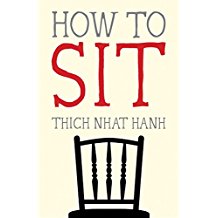
How to Sit
Provides simple directions on the mechanics of posture and breathing, along with instructions on how to best achieve an awakened, relaxed state of clarity to cultivate concentration and compassion.
How to Love
How to Love is the third title in Parallax’s Mindfulness Essentials Series of how-to titles by Zen Master Thich Nhat Hanh, introducing beginners and reminding seasoned practitioners of the essentials of mindfulness practice. This time Nhat Hanh brings his signature clarity, compassion, and humor to the thorny question of how How to Loveto love. He distills one of our strongest emotions down to four essentials: you can only love another when you feel
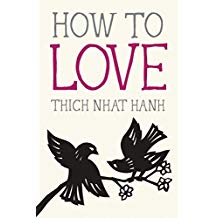
true love for yourself; love is understanding; understanding brings compassion; deep listening and loving speech are key ways of showing our love.
Pocket-sized, with original two color illustrations by Jason DeAntonis, How to Love shows that when we feel closer to our loved ones, we are also more connected to the world as a whole. With sections on Love vs. Need, Being in Love, Reverence, Intimacy, Children and Family, Reconciling with Parents, and more, How to Love includes meditations you can do alone or with your partner to go deep inside and expand your own capacity to love.
Scientific studies indicate that meditation contributes tremendously to well-being, general health, and longevity. How to Love is a unique gift for those who want a comprehensive yet simple guide to understanding the many different kinds of love, along with meditative practices that can expand the understanding of and capacity for love, appropriate for those practicing in any spiritual tradition, whether seasoned practitioners or new to meditation.
How to Relax
 How to Relax is part of The Mindfulness Essentials series of how-to titles by Zen
Master Thich Nhat Hanh, introducing beginners and reminding seasoned practitioners
of the essentials of mindfulness practice. Pocket-sized, with original two color illustrations
by Jason DeAntonis, How to Relax shows how critical it is to regularly interrupt the
hub-bub and routine of our lives to stop, relax mindfully, and recharge.
How to Relax is part of The Mindfulness Essentials series of how-to titles by Zen
Master Thich Nhat Hanh, introducing beginners and reminding seasoned practitioners
of the essentials of mindfulness practice. Pocket-sized, with original two color illustrations
by Jason DeAntonis, How to Relax shows how critical it is to regularly interrupt the
hub-bub and routine of our lives to stop, relax mindfully, and recharge.
Thich Nhat Hanh says that when we relax, we “become calm water, and we will reflect reality as it is. If we’re not calm, the image we reflect will be distorted. When the image is distorted by our minds, it’s not the reality, and it causes lots of suffering.” Relaxation is essential for accessing the tranquility and joy that lead to increased personal well-being. With sections on healing, relief from nonstop thinking, transforming unpleasant sounds, solitude, being peace, and more, How to Relax includes meditations you can do to help you achieve the benefits of relaxation no matter where you are.
Scientific studies indicate that meditation contributes tremendously to well-being, general health, and longevity. How to Relax is a unique gift for those who want a simple guide to achieving deep relaxation, controlling stress, and renewing mental freshness and clarity, appropriate for those practicing in any spiritual tradition, whether seasoned practitioners or new to meditations.
Come to Believe
 Taking inspiration from a storied history of Jesuit educational innovations, Stephen
Katsouros, SJ is trying something new as the dean of Arrupe College in Chicago. This
ambitious new venture offers free community college education to underprivileged Chicago
students.
Taking inspiration from a storied history of Jesuit educational innovations, Stephen
Katsouros, SJ is trying something new as the dean of Arrupe College in Chicago. This
ambitious new venture offers free community college education to underprivileged Chicago
students.
Come To Believe is both a memoir and a reflection on the eventful first year of the college’s existence. With profiles of teachers, students, and other partners in this bold project it will surely prove an inspiration for similar schools throughout the nation.
This Is Your Brain On Sports
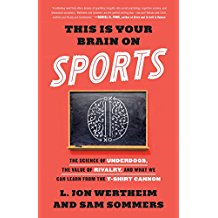 This is Your Brain on Sports is the book for sports fans searching for a deeper understanding
of the games they watch and the people who play them. Sports Illustrated executive
editor and bestselling author L. Jon Wertheim teams up with Tufts psychologist Sam
Sommers to take readers on a wild ride into the inner world of sports. Through the
prism of behavioral economics, neuroscience, and psychology, they reveal the hidden
influences and surprising cues that inspire and derail us—on the field and in the
stands—and by extension, in corporate board rooms, office settings, and our daily
lives.
This is Your Brain on Sports is the book for sports fans searching for a deeper understanding
of the games they watch and the people who play them. Sports Illustrated executive
editor and bestselling author L. Jon Wertheim teams up with Tufts psychologist Sam
Sommers to take readers on a wild ride into the inner world of sports. Through the
prism of behavioral economics, neuroscience, and psychology, they reveal the hidden
influences and surprising cues that inspire and derail us—on the field and in the
stands—and by extension, in corporate board rooms, office settings, and our daily
lives.
In this irresistible narrative romp, Wertheim and Sommers usher us from professional football to the NBA to Grand Slam tennis, from the psychology of athletes self-handicapping their performance in the boxing ring or the World Series, to an explanation of why even the glimpse of a finish line can lift us beyond ordinary physical limits. They explore why Tom Brady and other starting NFL quarterbacks all seem to look like fashion models; why fans of teams like the Cubs, Mets, and any franchise from Cleveland love rooting for a loser; why the best players make the worst coaches; why hockey goons (and fans) would rather fight at home than on the road; and why the arena t-shirt cannon has something to teach us about human nature.
In short, this book is an entertaining and thought-provoking journey into how psychology and behavioral science collide with the universe of wins-and-losses, coaching changes, underdogs, and rivalry games.
Eyes on Jesus
 A collection of poetic ruminations on the Gospels, Eyes on Jesus offers an experience
of prayer based on the Spiritual Exercises of St. Ignatius of Loyola.sReaders are
invited to embark upon a transforming journey to risk engaging Jesus’ story and the
stories of those he touched.
A collection of poetic ruminations on the Gospels, Eyes on Jesus offers an experience
of prayer based on the Spiritual Exercises of St. Ignatius of Loyola.sReaders are
invited to embark upon a transforming journey to risk engaging Jesus’ story and the
stories of those he touched.
Experiencing Jesus
 Michael Kennedy’s sequel to the award-winning Jesus Meditations, narrated by Martin
Sheen and Janne Shirley. This book and CD package offers ten individual meditations
to bring us into the presence of Jesus, the man from Galilee. Each section includes
a gospel reading, a meditation, and reflection questions that focus on the connection
between spirituality and social justice.
Michael Kennedy’s sequel to the award-winning Jesus Meditations, narrated by Martin
Sheen and Janne Shirley. This book and CD package offers ten individual meditations
to bring us into the presence of Jesus, the man from Galilee. Each section includes
a gospel reading, a meditation, and reflection questions that focus on the connection
between spirituality and social justice.
Dare to Lead
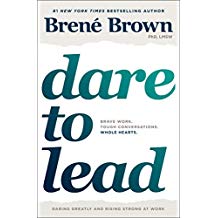 Leadership is not about titles, status, and wielding power. A leader is anyone who
takes responsibility for recognizing the potential in people and ideas, and has the
courage to develop that potential.
Leadership is not about titles, status, and wielding power. A leader is anyone who
takes responsibility for recognizing the potential in people and ideas, and has the
courage to develop that potential.
When we dare to lead, we don’t pretend to have the right answers; we stay curious and ask the right questions. We don’t see power as finite and hoard it; we know that power becomes infinite when we share it with others. We don’t avoid difficult conversations and situations; we lean into vulnerability when it’s necessary to do good work.
But daring leadership in a culture defined by scarcity, fear, and uncertainty requires skill-building around traits that are deeply and uniquely human. The irony is that we’re choosing not to invest in developing the hearts and minds of leaders at the exact same time as we’re scrambling to figure out what we have to offer that machines and AI can’t do better and faster. What can we do better? Empathy, connection, and courage, to start.
Four-time #1 New York Times bestselling author Brené Brown has spent the past two decades studying the emotions and experiences that give meaning to our lives, and the past seven years working with transformative leaders and teams spanning the globe. She found that leaders in organizations ranging from small entrepreneurial startups and family-owned businesses to nonprofits, civic organizations, and Fortune 50 companies all ask the same question:
How do you cultivate braver, more daring leaders, and how do you embed the value of courage in your culture?
In this new book, Brown uses research, stories, and examples to answer these questions in the no-BS style that millions of readers have come to expect and love.
Brown writes, “One of the most important findings of my career is that daring leadership is a collection of four skill sets that are 100 percent teachable, observable, and measurable. It’s learning and unlearning that requires brave work, tough conversations, and showing up with your whole heart. Easy? No. Because choosing courage over comfort is not always our default. Worth it? Always. We want to be brave with our lives and our work. It’s why we’re here.”
Whether you’ve read Daring Greatly and Rising Strong or you’re new to Brené Brown’s work, this book is for anyone who wants to step up and into brave leadership.
Devotions
 Throughout her celebrated career, Mary Oliver has touched countless readers with her
brilliantly crafted verse, expounding on her love for the physical world and the powerful
bonds between all living things. Identified as “far and away, this country’s best
selling poet” by Dwight Garner, she now returns with a stunning and definitive collection
of her writing from the last fifty years.
Throughout her celebrated career, Mary Oliver has touched countless readers with her
brilliantly crafted verse, expounding on her love for the physical world and the powerful
bonds between all living things. Identified as “far and away, this country’s best
selling poet” by Dwight Garner, she now returns with a stunning and definitive collection
of her writing from the last fifty years.
Carefully curated, these 200 plus poems feature Oliver’s work from her very first book of poetry, No Voyage and Other Poems, published in 1963 at the age of 28, through her most recent collection, Felicity, published in 2015. This timeless volume, arranged by Oliver herself, showcases the beloved poet at her edifying best. Within these pages, she provides us with an extraordinary and invaluable collection of her passionate, perceptive, and much-treasured observations of the natural world.
The New Peoplemaking
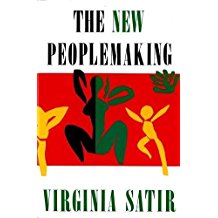 Revised and expanded seminal work on families, with more than a million copies sold
in 12 languages. The New Peoplemaking expresses Satir’s most evolved thoughts on self-worth,
communication, family systems, and the ways in which people relate to one another.
Drawn on Satir’s lifetime of experience with thousands of families around the world,
it is written in the engaging style for which she is famous. The New Peoplemaking
is completely revised and enlarged by six new chapters that elaborate on the whole
of life.
Revised and expanded seminal work on families, with more than a million copies sold
in 12 languages. The New Peoplemaking expresses Satir’s most evolved thoughts on self-worth,
communication, family systems, and the ways in which people relate to one another.
Drawn on Satir’s lifetime of experience with thousands of families around the world,
it is written in the engaging style for which she is famous. The New Peoplemaking
is completely revised and enlarged by six new chapters that elaborate on the whole
of life.
A Curious Mind
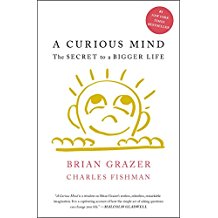 From Academy Award–winning producer Brian Grazer, New York Times bestseller A Curious Mind offers a brilliant peek into the “curiosity conversations” that inspired him to create
some of the world’s most iconic movies and television shows. He shows how curiosity
has been the “secret” that fueled his rise as one of Hollywood’s leading producers
and creative visionaries, and how all of us can channel its power to lead bigger and
more rewarding lives.
From Academy Award–winning producer Brian Grazer, New York Times bestseller A Curious Mind offers a brilliant peek into the “curiosity conversations” that inspired him to create
some of the world’s most iconic movies and television shows. He shows how curiosity
has been the “secret” that fueled his rise as one of Hollywood’s leading producers
and creative visionaries, and how all of us can channel its power to lead bigger and
more rewarding lives.
Grazer has spent most of his life exploring curiosity through what he terms “curiosity conversations” with some of the most interesting people in the world, including spies, royals, scientists, politicians, moguls, Nobel laureates, artists…anyone whose story might broaden his worldview. These discussions sparked the creative inspiration behind many of his movies and TV shows, including Splash, 24, A Beautiful Mind, Apollo 13, Arrested Development, 8 Mile, J. Edgar, Empire, and many others.
A Curious Mind is not only a fascinating page-turner—it also offers a blueprint for how we can awaken our own curiosity and use it as a superpower in our lives. Whether you’re looking to strengthen your management style at work, uncover a new source of creativity, or become a better romantic partner, this book—and its lessons on the power of curiosity—can change your life.
How We Live
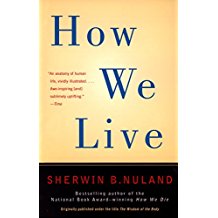 Having won the National Book Award for How We Die, his best-selling inquiry into the causes and modes of death, Sherwin Nuland now
turns his attention to the miraculous resiliency of human life. For this lucid, wonderful,
and wonder-filled new book explores the body’s mysterious capacity to marshal disparate
organs and processes in the interests of survival.
Having won the National Book Award for How We Die, his best-selling inquiry into the causes and modes of death, Sherwin Nuland now
turns his attention to the miraculous resiliency of human life. For this lucid, wonderful,
and wonder-filled new book explores the body’s mysterious capacity to marshal disparate
organs and processes in the interests of survival.
Like its predecessor, How We Live is filled with gripping medical case histories: a woman is pulled back from the brink of death from inexplicable internal bleeding; another patient triumphs over breast cancer; the “routine” removal of a polyp triggers a nearly lethal medical crisis. For Nuland, each of these cases serves to illustrate the extraordinary responsiveness and adaptability of the human organism. We learn how the aorta’s baroreceptors monitor blood pressure and respond to its minutest fluctuations. We follow the intricate chain of electrochemical command that makes us leap out of the path of a speeding car. We discover why the stomach—which is capable of breaking down everything from porridge to pizza—refrains from digesting itself. Informed by sympathy for human suffering and an erudition that includes poetry and the Talmud as well as the medical canon, How We Live is science writing of the rarest kind—lucid, poetic, and genuinely uplifting.